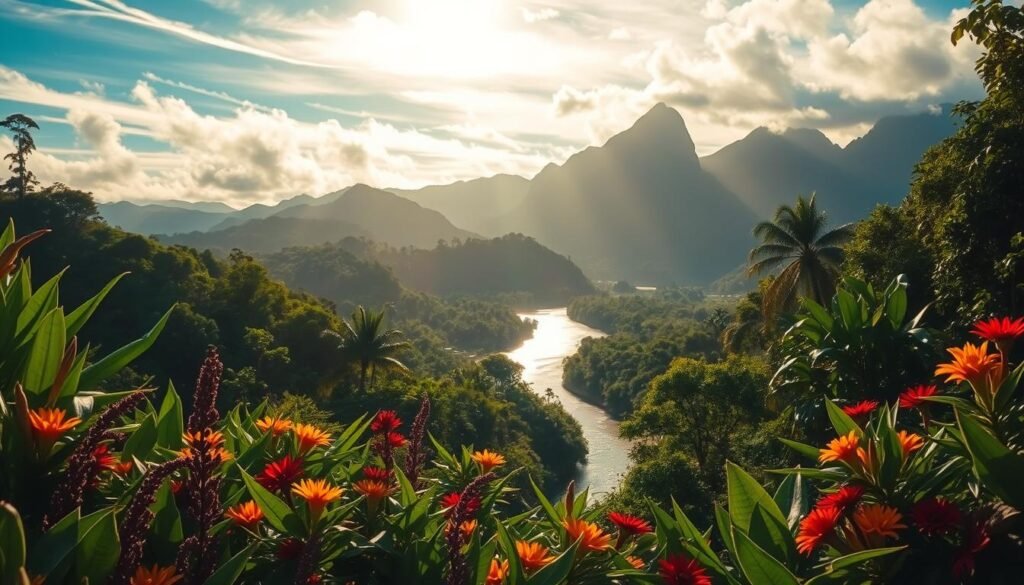Surprising fact: more than 40% of arrivals concentrate around the holiday peak, making Christmas and New Year the busiest weeks of the year.
I plan trips often, and I’ve learned a few reliable rules that cut crowds and costs without sacrificing weather or wildlife moments. Shift a trip a few days after January 1 and you often find lower prices and thinner crowds while beaches remain sunny on the Pacific side.
Microclimates shape every itinerary here. Guanacaste can be bone-dry from January through March, while the Osa Peninsula may see heavy rain in October. The green season (May–November) still yields clear mornings and great value for travelers who don’t mind brief afternoon showers.
I’ll walk you through regional highs—whale calving, migrant birds, turtle nesting—and smart booking tips so you plan a vacation that matches your priorities. For a compact planning guide, see my linked overview on timing and trends: holiday and seasonal tips.
Key Takeaways
- Peak weeks (Christmas–New Year) bring crowds and higher rates; shifting dates saves money.
- January offers sunny Pacific beaches and lush forests after the rains.
- Guanacaste stays dry early in the year; the Osa can be very wet in October.
- Green season delivers clear mornings, fewer visitors, and better value.
- Wildlife peaks: migrant birds, humpback whales, and nesting turtles in early months.
Best time to visit Costa Rica at a glance
A quick yearly snapshot helps you choose the right month for sunshine, wildlife, or lower prices.
I break the year into clear blocks so you can match weather, crowds, and budget with ease. The Pacific side runs a dry stretch from December through April with sunny days and minimal rain. From May through November the green season brings bright mornings and short afternoon showers.
- Pacific (Dec–Apr): sun for beaches and trekking; plan busy days early.
- Green season (May–Nov): lush forests, lower prices, clear mornings and rainy afternoons.
- Southern Pacific: wetter year-round than the north; expect clouds more often.
- Caribbean coast: no true dry season, but a drier window appears in September–October.
- Peak weeks: Christmas, New Year, and Easter spike crowds and prices—book ahead.
Match your priorities: perfect weather may mean high costs; shoulder months often give the best balance.
How Costa Rica’s regions shape the weather, seasons, and your trip
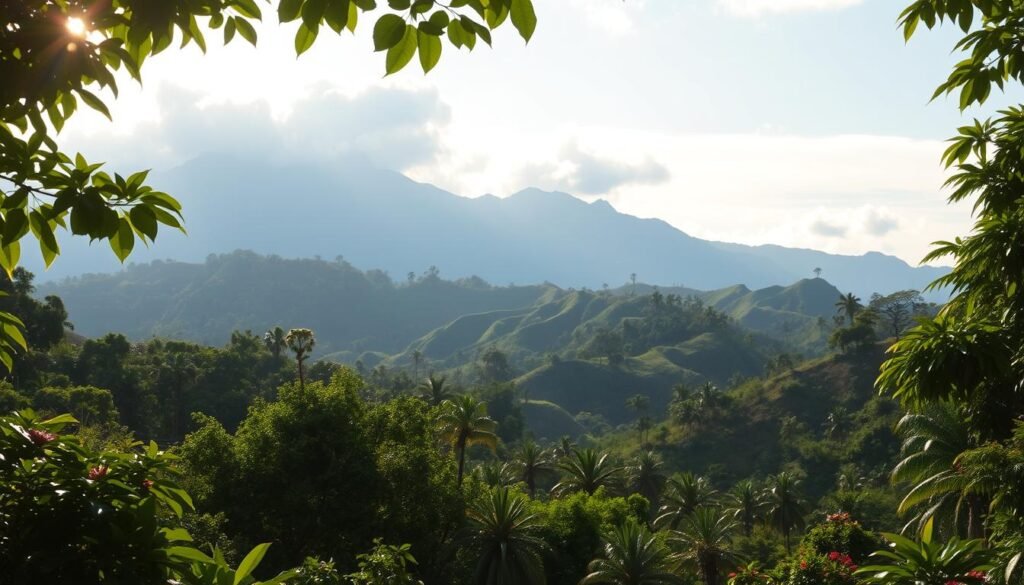
Regions here feel like different countries: sun-soaked northern shores and emerald, rain-rich southern jungles.
Pacific north vs southern Pacific
The northern Pacific (Guanacaste and Nicoya) runs mostly bone-dry from January through March and is broadly dry December–April. That draws heavy beach tourism and reliable sea and surf days.
The southern Pacific — Manuel Antonio and the Osa — stays much wetter. I warn travelers: October can bring heavy rainfall and muddy roads in the Osa, so choose dates with care.things-to-do-in-panama-city
Central Valley and highlands
Arenal, Monteverde and the Central Valley feel like eternal spring. Elevation cools the air, the cloud forests hold mist and clear mornings, and rainfall patterns are gentler than lowland jungles. Nights stay crisp and pleasant.
Caribbean coast
The Caribbean has no true dry season, but it often shines in September–October and sees slightly less rain February–April. Microclimates matter: one town may flood while a nearby beach stays dry.
“Pick places first, then match the season; that way you get the weather and wildlife you came for.”
- Pro tip: I match regions with activities — surf and sunsets in Guanacaste, jungle lodges in the south, birding in the highlands — and plan around each region’s seasonality.
Dry season, rainy season, and shoulder months explained
Seasons here follow clear rhythms more than strict guarantees. I map those rhythms so you know which days are likely sunny and which often bring heavy rainfall.things-to-do-in-broken-bow-ok
The dry season: December through April
The dry season means many beach-perfect days, clear roads, and easy logistics across the Pacific and highlands. Guanacaste sees the most reliable sunshine, making outdoor plans simple and predictable.
The rainy (green) season: May through November
The green season typically brings sunny or partly sunny mornings and showers in the afternoon or evening. Temperatures stay warm (often 77–93°F) and humidity rises, so plan hikes early and expect afternoon storms.
Shoulder months, microclimates, and shifts
May, June, and November often act as shoulder months — lots of sun, quick passing showers, and better value for travelers. September–October usually carry the heaviest Pacific rainfall while the Caribbean can be at its driest then.
“Plan key excursions in the morning, keep afternoons flexible, and pack both sun protection and a light waterproof layer.”
- Packing tip: sunblock, hat, and water for dry season days; lightweight rain jacket and waterproof footwear for green season.
- Note: microclimates and elevation create local twists — conditions can change a short drive away.
Month-by-month guide to the best times, weather, and crowds
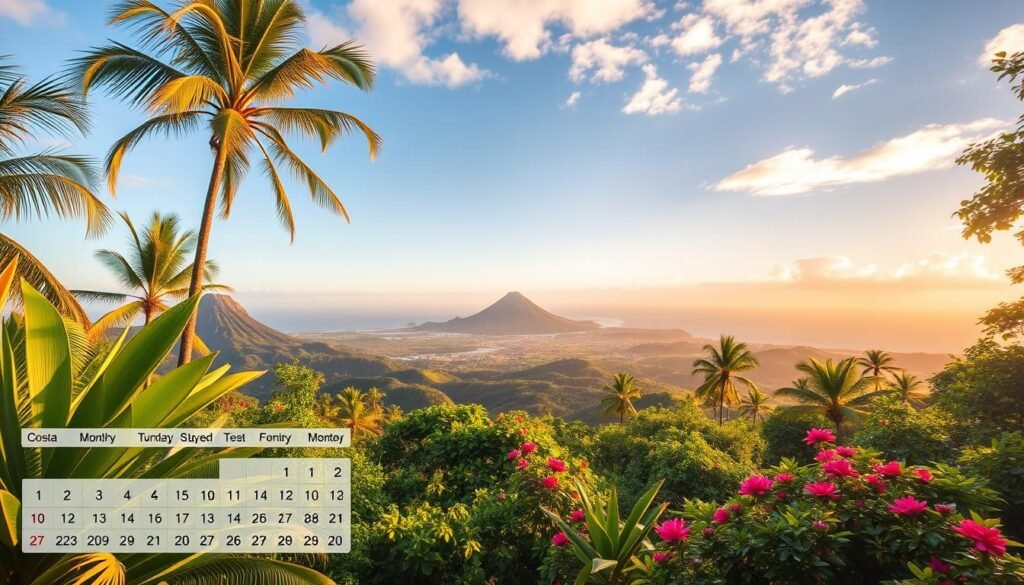
I walk through the year one month at a time so you know which days bring sun, storms, or animal highlights.
January–February
After New Year’s week, crowds drop around January 5 and prices often ease. Beaches on the Pacific stay sunny and rivers still offer good rafting.things-to-do-in-naples-florida
Wildlife: humpback whales are active and cloud forests begin quetzal nesting by February.
March–April
These are the hottest months on the Pacific coast and very busy around Easter week. If rafting is on your list, expect lower river levels in some northwest rivers.
Booking note: book early for March and Easter dates to avoid sold-out lodging and higher prices.
May–June
Green season begins. Shorter, heavier showers refresh forests and waterfalls, and visitors thin out.
Perks: lower prices, lush scenery, and turtle nesting ramps up on many beaches.
July–August
My favorite off-peak stretch: mornings are often clear, afternoons bring brief rains, and travel value improves.
Rafting conditions peak and Antarctic humpback whales arrive in the Golfo Dulce. Turtles remain active on select shores.
September–October
The Pacific and central highlands see the heaviest rains and the deepest discounts. Trails are quiet and many places are nearly empty.
Flip side: the Caribbean often dries out now and sea turtle hatching peaks at Tortuguero.
November–December
Early November is variable, then the northwest usually dries by late December. Surf swells build in late fall and holiday buzz returns.things-to-do-in-prague
“Mix regions and flexible dates for the best balance of weather, wildlife, and prices.”
- Book far ahead for March–April and late December holidays.
- Mix Pacific and Caribbean stays if you need reliable days for specific activities.
- Plan key wildlife outings in morning hours for clearer days and calmer crowds.
For a concise planner and seasonal overview, see my short guide: holiday and seasonal tips.
The best time to visit Costa Rica for beaches, wildlife, and adventure
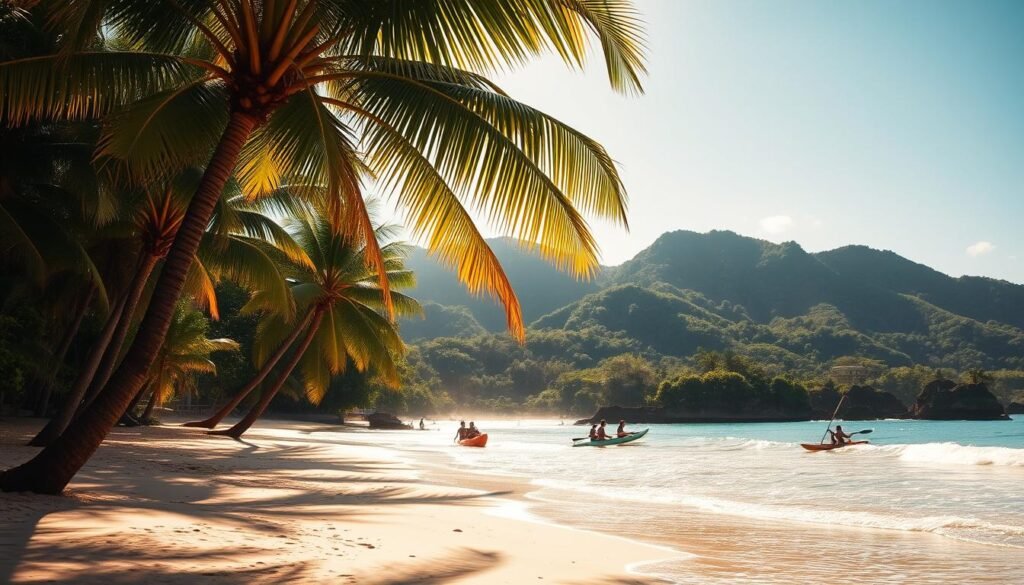
I match landscapes and seasons so sunrise beach walks, canopy trails, and whale watches line up with the calendar.
Beach days and surfing: dry season sun and late-fall swells
Dry season (Dec–Apr) delivers reliable sunny beach days on the Pacific, especially in Guanacaste.
If you chase surf, late fall (Nov–Dec) brings consistent swells. The green season also offers powerful waves and fewer surfers.things-to-do-in-lisbon-portugal
Wildlife watching: sea turtles, humpback whales, and quetzal nesting
Wildlife windows matter. Sea turtles nest and hatch on Caribbean shores in late summer and fall.
Humpback whales appear off the Pacific; Antarctic humpbacks show up in Golfo Dulce mid-year.
Quetzal nesting begins around February in cloud forests, so highland mornings reward birders.
Cloud forests and canopy walks: Monteverde and highland magic
Monteverde and Arenal offer crisp mornings and mist that makes canopy walks photogenic.
I suggest early-day visits for clearer skies and better light on hanging bridges.
Waterfalls, rafting, and rainforest treks in the green season
The green season fills rivers and revives waterfalls like Río Celeste in Tenorio.
That means top rafting conditions and dramatic photo opportunities after rains.
- Quick planner: two beach days, one wildlife day, one waterfall/rafting day.
- Mix coasts by season—pair a Pacific beach base with a Caribbean side trip for varied weather and sights.
- Book key wildlife outings at dawn or dusk for higher sighting rates.
| Activity | Peak Window | Best Places | Why |
|---|---|---|---|
| Sunny beach days | Dec–Apr | Guanacaste, Nicoya | Stable weather and clear skies |
| Surf (big swells) | Nov–Dec, Green season | Pacific breaks | Consistent swells; fewer surfers during rains |
| Whale watching | Mid-year & late-year | Golfo Dulce, Southern Pacific | Humpback and Antarctic migrations |
| Waterfalls & rafting | May–Nov | Tenorio (Río Celeste), central rivers | Full rivers and vivid cascades |
For a quick seasonal checklist and planning tips, see this concise guide: seasonal overview.
Prices, crowds, and booking tips for an affordable, stress-free trip
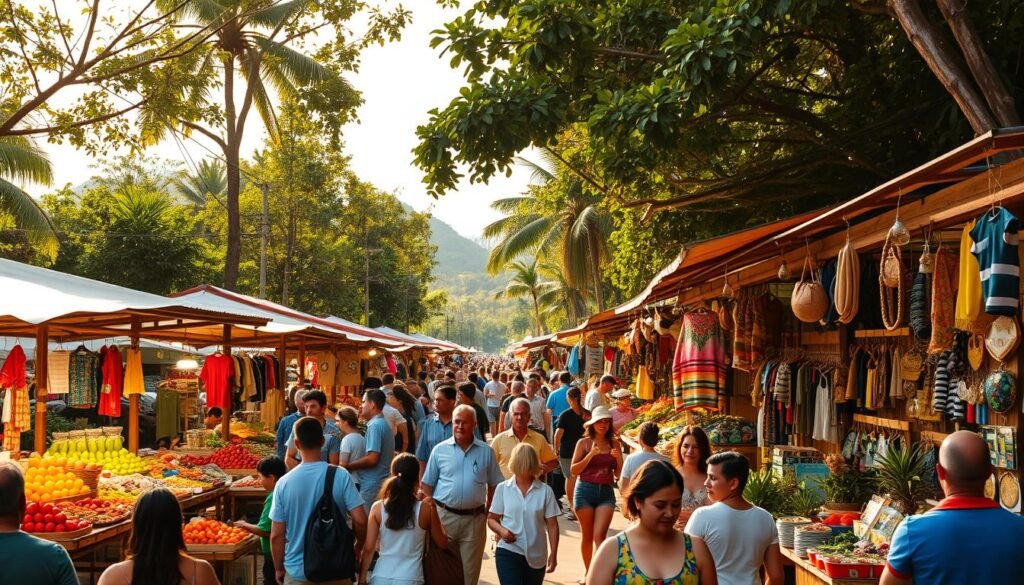
I show practical ways to cut lodging bills and avoid crowds while keeping clear-morning adventures and strong wildlife chances.
How to avoid crowds and find great deals in shoulder and green seasons
Target May–June and September–November. Those windows usually offer the best prices and still deliver sunny mornings with short afternoon rain. Shifting dates by a few days around holidays often lowers rates and improves availability.things-to-do-in-lake-george
July–August has grown in popularity but still tends to be cheaper than holiday weeks. Book popular tours a few months ahead for that stretch.
Holiday peak planning: advanced bookings, flexible dates, and budget strategy
Christmas, New Year, and Easter weeks can run nearly twice the normal prices. I advise booking 9–12 months ahead for boutique lodges; many sell out early.
Practical budget split: allocate most of your spend to lodging and guided experiences, save on car rental by using midweek arrivals, and pick a mix of cheap transfers and one or two paid guided tours.
- Mix regions to hedge weather—pair a discounted Pacific lodge with a Caribbean stop in Sept–Oct.
- Choose flexible cancellation policies and aim for midweek check-ins for better rates.
- Pre-book high-demand activities: night turtle walks, canopy tours, and timed park entries.
“Shift a trip a few days away from peak holiday weeks and you often find lower prices and thinner crowds.”
| Booking Window | Crowds | Prices | Action |
|---|---|---|---|
| Peak holidays (Dec/Jan, Easter) | Very high | Up to 2x average | Book 9–12 months out; expect limited availability |
| Shoulder (May–Jun; Sep–Nov) | Low–Moderate | Lowest | Target these months for deals and clear mornings |
| Mid-summer (Jul–Aug) | Moderate | Below peak | Good wildlife; book key tours early |
| Green season days | Low | Discounted | Plan morning activities; keep afternoons flexible |
Quick booking timeline: secure peak stays 9–12 months ahead; for shoulder travel, book 2–4 months out. For anything in July–August, aim for 4–6 months.
I use sunrise entries, guided night tours, and timed tickets to beat crowds at parks. Those moves save time and often improve sightings—so your trip feels relaxed and richer without a bigger bill.
Conclusion
A small date shift or a regional swap often turns a crowded week into a calm, richer stay.
There’s truly no bad month in this country—your choice depends on whether you want dry-season beaches, green-season waterfalls, Caribbean late-year sunshine, or peak wildlife windows.
Pick mornings for key activities and plan a mix of coasts and highlands to weather‑proof your days. Shift a holiday arrival by a few days and you can slash costs and crowds without losing the highlights.
Map your dates against this guide, lock plans early for popular weeks, and you’ll find a great time that fits your wish list and budget for a memorable costa rica trip.


